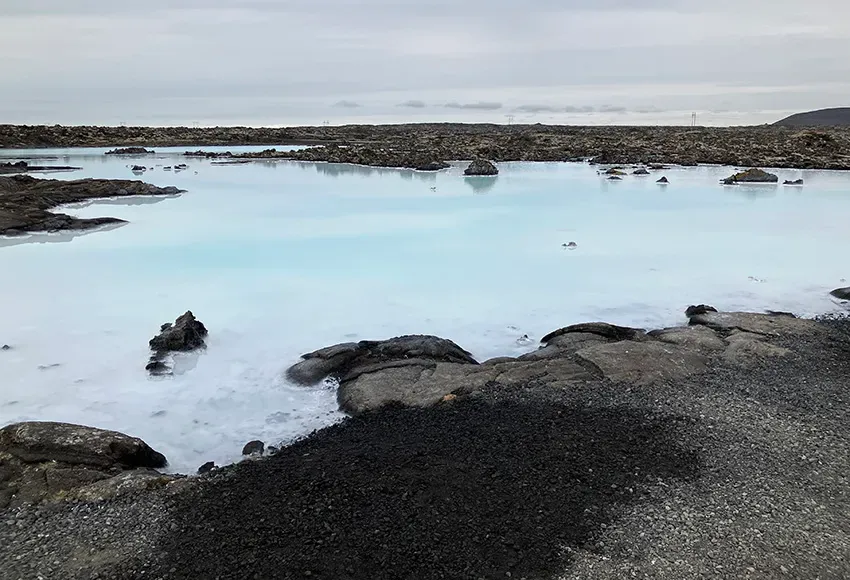LGBT people like to travel, and like many others, they take cruises to see the world or just to relax. It used to be, when taking something as personal as a cruise – where you'll be with people in close quarters and where conversations can be easily overheard – you might have felt uncomfortable to be yourself.
Today there are numerous LGBT cruises for almost every segment of the community, where you can be your fabulous self and party until dawn or more. Among those companies are Atlantis Adventures, primarily for men; and Olivia Cruises for women.
But those companies still form only a fraction of available sailings. So, how welcoming are non-LGBT cruises?
My husband Jason and I have been on numerous cruises on many LGBT and non-LGBT lines. For our current trip, we booked with Oceania, a line known for its food (they claim to have the best food at sea), exceptional attention to detail, and out-of-the-ordinary shore excursions. We chose Oceania once before, and it was better than most of the other cruises we've taken.
Another advantage of Oceania is that it offers exotic itineraries. Our July voyage started in Reykjavik, Iceland, and then proceeded to Greenland, the Shetland Islands, Denmark, and Sweden before ending in Oslo, Norway, after a whopping 15 days. We traveled with another Gay couple, our friends Klay and Val, who are out and proud like us.
And that really is the heart of the question: how out and proud can LGBT people be on a traditional cruise?
Out and proud?
On the first night, the ship promoted an "LGBTQIA+ get-together" on the daily schedule printout. The four of us attended, along with three other couples, though we weren't the only LGBT people on board. Throughout the trip, we met many others, mostly couples, who had also had other cruise experiences. I asked many of them why they picked this cruise over an LGBT one, as well as how comfortable they felt being out on the ship.
The overwhelming answer was that people on a cruise, like the general population, gravitate to like-minded people, and since everyone's on vacation, it's easier to get along. Most of them were comfortable being open about their sexuality.
Jason and I felt comfortable enough to show our emotions at times and hold hands or put an arm around each other, just like non-LGBT couples. It made a larger point for me. Could we have done that a decade ago? The answer is: probably not. So in that regard, traditional cruises pass the comfort level for LGBT people.
But what about the more nuanced reality of being one of the 3% on a cruise?
Like any cruise, we found ourselves making our own friends, who turned out to be a fascinating lot. There was a couple who work at a small college and are developing new ways to be inclusive of LGBT students. There was also a retired couple from Seattle, and another from Dallas. That's the secret sauce in cruising: finding the people you get along with and having a nice time.
Iceland
For all of us, the two factors that led us to choose this cruise were the itinerary and the reputation of Oceania. Let's start with the stops.
The departing port, Reykjavik, deserves a few days to tour, since Iceland has some of the greatest landscapes and wonders on earth – and if you're lucky as we were, you will be met by an active volcano. So we arranged for three days of touring with an LGBT company called Pink Iceland (https://www.pinkiceland.is). (There not only is a sizable LGBT population in Iceland, but it seems that everywhere you go, there are rainbows. The country even has had a Lesbian prime minister. It's one of the most LGBT-friendly places on earth.)
Our first day, we traveled to the south shore and marveled at the raw natural landscape, which looks like something from the moon but is actually dried lava with moss growing atop. Volcanoes and glaciers are everywhere, and so you'll see steam coming up from the ground in certain places. This has translated into natural geothermal energy that powers the country, as well as natural glacier water (which tastes better than any bottled water) in every home.
Later that day, we went to the black beach at Reynisfjara, with its basalt rock formations from eruptions thousands of years ago. We also visited and walked behind several waterfalls, and the sunshine meant that rainbows were aplenty. It was wet, magical, and romantic.
Our second day began with an adventurous ATV ride on that moonscape with a stop at a dormant volcano's top ridge. With me driving, Jason held on for dear life. Afterward, we spent the afternoon in the world-famous Blue Lagoon spa, where there are pools of volcanic minerals and silica that are a color of blue you'll see no other place on earth. As you soak, you can apply those minerals as a face mask. Even though it was around 50 degrees outside, by the time we finished, we were all pleasantly overheated.
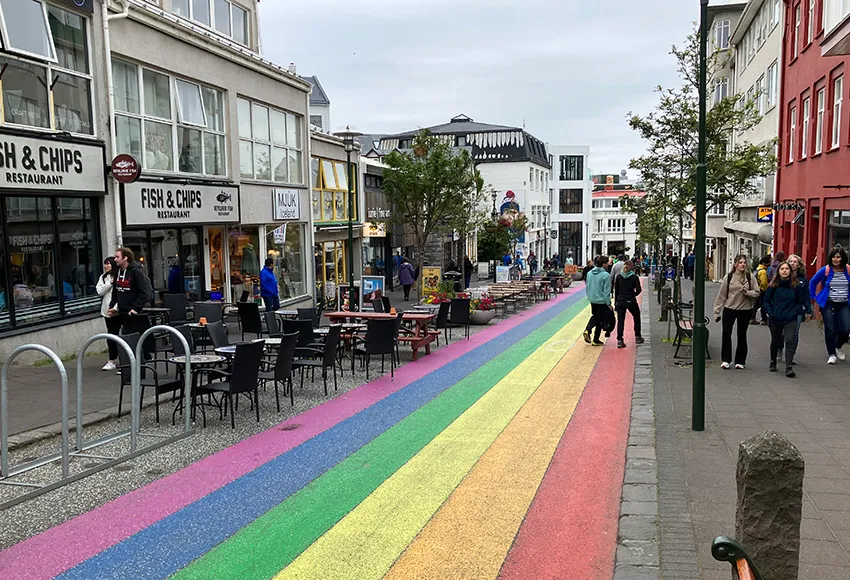
On our third day, we toured the capital city, Reykjavik, which is easily walkable and features a long rainbow-colored street. We then attended a get-together organized by Eva and Birna, the owners of Pink Iceland, with some local LGBT community members, including a member of Parliament and playwright Bjarni Snaebjornsson (@bjarni.snaebjornsson on Instagram), who was the first to come out in his village in western Iceland. The audience was among the most engaged I've ever spoken to, and they asked insightful questions and were delightful to talk with. Iceland is a country built on stories (called the Sagas), so the people are keen to learn the stories of others.
After our three days in Reykjavik, we went onto our ship, the Oceania Riviera.
The ship had recently come out of dry dock after a total renovation. The cabin was the most beautiful we've ever seen at sea, and had ample closet space and a bathroom with a rainfall shower. Our home away from home would be comfy.
Our friends Klay and Val opted for a larger room with butler service. It had more closet space than some New York apartments, and the amenities were above average. But their butler, as they learned, seemed to have had no understanding of his role and often overcomplicated things.
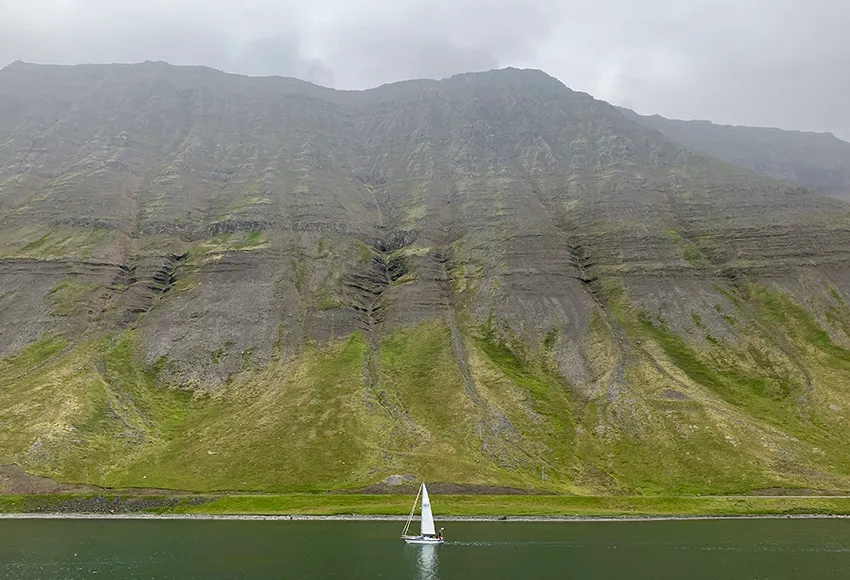
Ísafjörður, Iceland
Iceland is still developing its infrastructure for tourism. Our ship had provided 10 shore excursions, but all were completely sold out before we even boarded, including the one we wanted most: whale watching. The fact that excursions sell out months before the trip was not fully communicated to us. When we attempted to book six weeks before the trip, many ports had no available excursions.
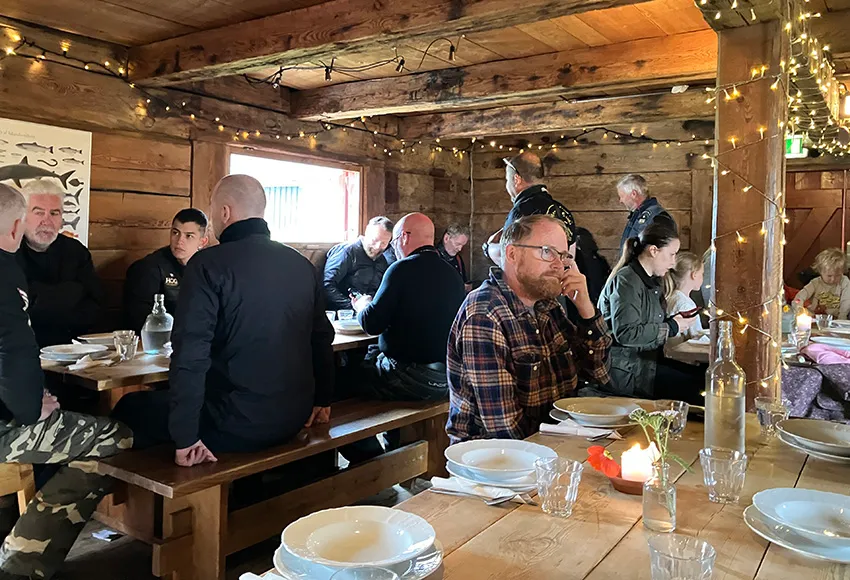
Nevertheless, in this small fishing village, left to our own devices, we discovered one of the treasures of Iceland, the Tjöruhúsið Restaurant, serving the most traditional Icelandic food in the country. You still needed a reservation, though, since locals and tourists come from all over for its cuisine. But with true Icelandic hospitality, the staff found room and were kind enough to seat us, and I must admit that while I'm not a seafood eater, it was amazing. The buffet meal included a fish soup, five types of fish entrees (including fish throat, which I didn't know existed), various vegetable combinations, coffee, biscuits, and chocolate.
After the meal, we took a stroll through the village and discovered that besides fishing boats, fjords, and homes, the town has a main square with a giant rainbow painted down the center. That's two for two cities in Iceland with rainbow streets.
Paamiut, Greenland
Our second stop was a small village of about 1,300 whose whole economy was based on fishing and seal hunting. Very few cruise ships have ever stopped there, and for good reason. While there are limited facilities and the infrastructure is sparse, the main problem was that as we approached, the seas were somewhat choppy, and we found ourselves in a sea of icebergs.
Before I could suggest to everyone that we all break out into a chorus of "My Heart Will Go On," the captain stated the obvious: he canceled the adventure in Paamiut. It was not safe to take the tenders ashore (there was nowhere to dock in a port that small). However, a consolation prize was being treated to a sea of majestic icebergs as we sailed away.
That evening, the entertainment and information system in all the staterooms went down. No television, no stateroom information, no map. Not only was the television system down, but the ship's entire network went down as well. The casinos were out of service, and bartenders and shop staff had to write down stateroom numbers on paper receipts. Getting information about the problem was met with what would become a common complaint on this trip: a lack of communications skills on the part of the staff.
But we moved on to the next port of call, which turned out to be one of the highlights of the trip.
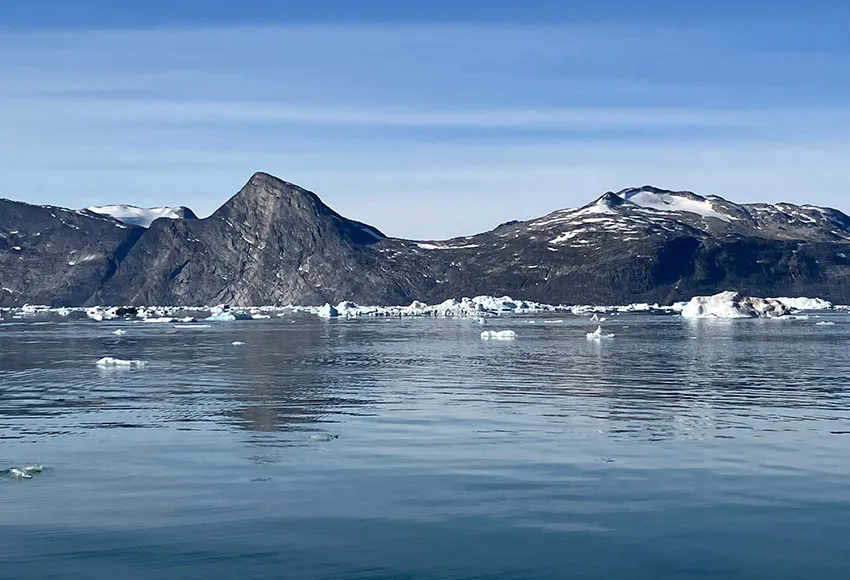
Nuuk, Greenland
The capital of Greenland, Nuuk, held its Pride celebration the week before we arrived. Discovering small cities with Pride events astonishes me even to this day. We had tried to find a Nuuk Pride T-shirt, but since the city is so small (17,000 people), the organizers told me they didn't have the funds to create merch.
For our excursion for the day, we chose the fjord boat tour, which was majestic. Our driver dodged icebergs like a taxi weaving in and out of traffic. When we stopped for a few minutes, the calmness and solitude – and being surrounded by ice and mountains – was otherworldly.
Sadly, our driver said that 10 years ago, none of the ice in the water was there; the current state was a result of climate change and melting ice. I shudder to think what the area will be like in another 10 years.
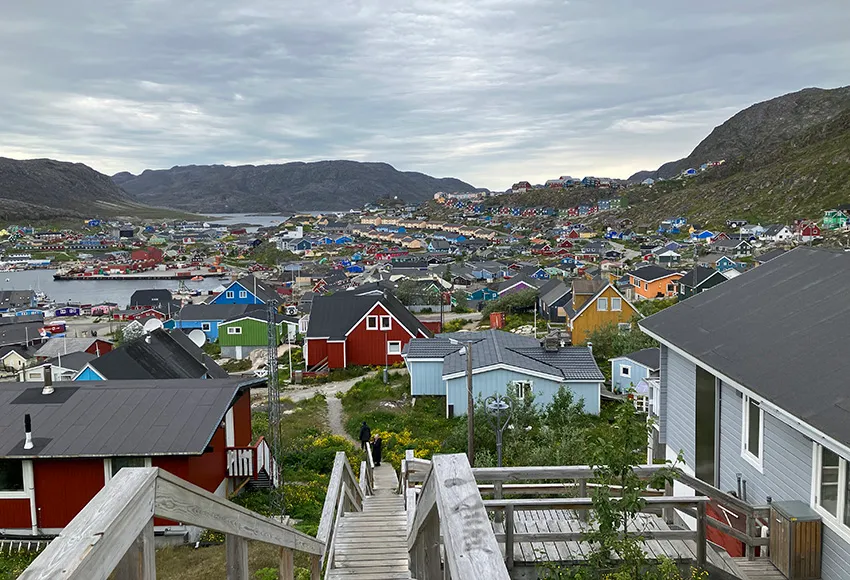
Qaqortoq, Greenland
In this 1,500-person city south of Nuuk, the excursion we chose was the "Kaffemik," basically enjoying coffee and traditional Greenland cakes in a private house. We walked up the hills and passed by colorful homes to get to the residence of our host, a charming, 80-year-old widow with Swedish ancestry who explained Greenlandic culture. One of her children was there to help translate, while her other children live in Denmark (of which Greenland is a territory, and which, during the pandemic, sent ample funds to make up for Greenlanders' loss of income.)
After we wrapped up our sightseeing, while walking around the ship that evening, we came across a portrait of the godmother of the ship, Cat Cora, the famous Iron Chef. She and her wife and children were also among the guests on board with us. We went to see her give a talk the following evening. We figured that, since there was no working casino or stateroom entertainment, meeting an Iron Chef would be worth seeing. During her presentation, she introduced her family, and afterward, we got a chance to chat. When I asked her about how it felt introducing her wife, she said, "That's what we need as a community – we need to be more visible." That was music to our ears.
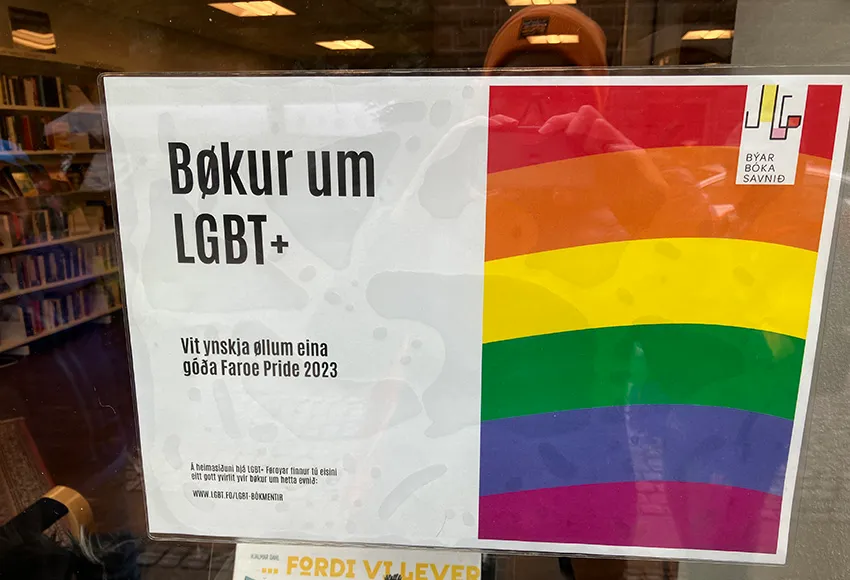
Torshavn (Faroe Islands), Denmark
The charming capital of the Faroe Islands is a wonder of old architecture and homes with grass roofs. The town's library had several LGBT books on display in the window, due to the previous week's Pride celebration. After learning about Pride in Nuuk, Greenland, and now also the Faroe Islands, this trip proved to me what I've always believed: that Pride is one of the best exports America has ever given to the world. I thought of my friend Ellen Broidy, who helped write the resolution that created Pride, and all of us who marched in that first Pride in 1970 in New York.
Lerwick (Shetland Islands), Scotland
Believe it or not, it was actually stated in the ship's excursion brochure that an "encounter with Shetland ponies is not guaranteed," which gave me a chuckle.
The tour we took in Lerwick included going to the town's museum to learn about the Shetland Bus (which ferried people and supplies back and forth to Norway during WWII) as well as, thankfully, a stop at a Shetland pony farm. Seeing these animals and the beautiful green hills full of sheep was the highlight of this stop.
One surprise was that while the Shetlands are part of Scotland, the citizens feel culturally closer to Norway, and there are lots of Viking motifs.
Haugesund, Norway
While there were excursions available to see the Norwegian fjords, by this point in the trip, we needed a little bit of a break, so we simply walked around the town's main square, bought a magnet as a souvenir, and enjoyed the warm sunshine, the first day above 50 degrees we'd had in two weeks. One of the Queer couples did go on a fjord tour, and they said it was beautiful, despite spending three hours in a bus to get there.
Skagen, Denmark
Skagen is the picture-perfect Danish seaside town. I'd recommend not doing any guided tours but rather just walking around the downtown area on your own. There are museums, art galleries, shopping, and plenty of outdoor cafés and bistros. There are also top-notch garden shops for those who have a green thumb.
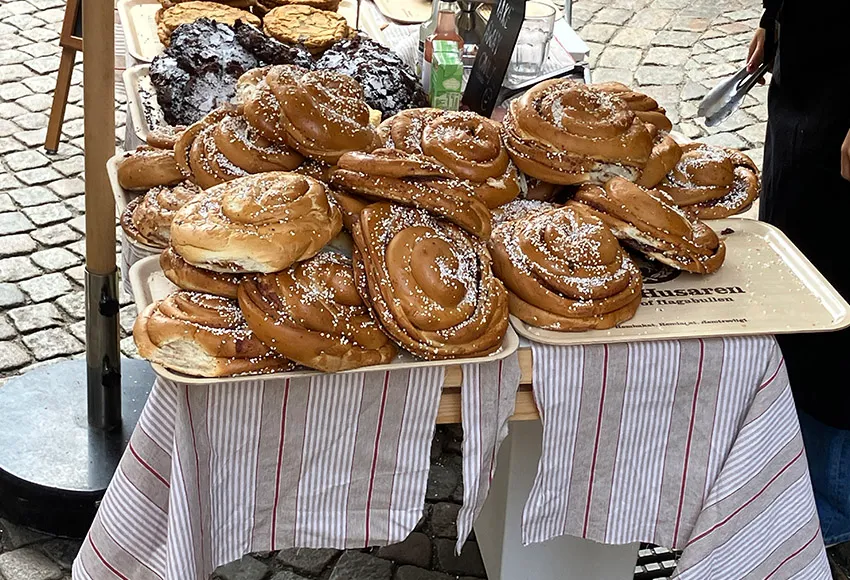
Gothenburg, Sweden
Sweden's second-largest city (population: 579,000) is a model of a beautiful European metropolis, with Second Empire buildings and a very large central shopping area. We stumbled upon some fun shops, including one dedicated to Pippi Longstocking, as well as the largest cinnamon rolls and cookies we've ever seen. We took some time to sit in a park and enjoy the surroundings.
On the final night of the cruise, we enjoyed a performance by Tiano, the tenor and piano duo of Shimi Goodman and Chris Hamilton. They dedicated one of the love songs to Val and Klay, who were celebrating their 25th anniversary. The duo will soon embark on a North American tour, and we're looking forward to seeing them again. They're also a couple, and they mentioned that they were glad to meet other LGBT people on the ship.
Delight and some disappointment
The cruise ended in Oslo, Norway, and many passengers planned a couple-day layover before heading home. But others, like Jason and me, decided to head to the airport the morning of disembarkation, and we purchased tickets from the ship that would transfer us and our luggage to the airport. The luggage was put in a truck, and we were ushered into buses. The process was confusing, and there was no ship representative at the airport to direct us where our luggage was. Ultimately, the truck arrived about 15 minutes after we did, and everyone was reunited with their bags.
Compared to the other Oceania cruises we've been on, this one failed to meet expectations. While it had what seemed like the best cabin at sea and a wonderful itinerary, the staff, while helpful, seemed to be learning on the job.
The other major disappointment was the food. Oceania no longer has the best food at sea. Other than the specialty restaurants, it was similar to any other ship at best, and at times, some of it was severely disappointing.
Also disappointing was the lack of available shore excursions, and lack of communication skills. The absence of information, especially from the cruise director and excursion staff, was subpar compared to many other voyages we've been on. And while the ship did go to ports that have little infrastructure, there are ways to mitigate that, which the staff did not do.
While the experience did not bolster Oceania's reputation, it still afforded us delight in the people we met and the destinations we saw along the way. That's what we'll remember most. A private party with some of the LGBT guests we met; Tiano on that final night; the maître d' in the dining room who seemed to know the name of every passenger on the ship – each evening we had the pleasure of sharing our experiences with our friends over dinner.
To sum up the reason for this trip: as an LGBT couple, we felt comfortable being ourselves on a non-LGBT cruise, and the other LGBT people we spoke with didn't seem to have any issues either. As for whether we'd take Oceania again, we sadly would not, unless the itinerary was completely unique. Oceania seemed to have lost the sparkle that made it one of the best such companies around.
But despite the ship's faults, seeing Iceland, Greenland, and so many other places was an experience of a lifetime. We can't wait to go back to Reykjavik someday and tour more of the country and meet more of the people. And we're forever grateful to have seen Greenland, a place of unparalleled beauty and where few others have ever been. It's a reminder that the planet has existed long before humans, and that we are but a small part of the wide wonder of nature.
Courtesy of the National LGBT Media Association


